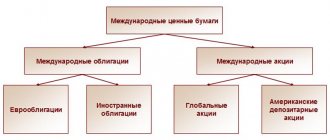Municipal bonds are issued by various constituent entities of the Russian Federation and municipalities. Demand for MO often exceeds supply due to attractive profitability.
Along with GKOs and OFZs, in terms of reliability class and reserve standards, they are classified as state-owned. They trade municipal bonds on the MICEX, through a broker or IIS.
Despite safe and mutually beneficial cooperation with regional representatives, investors still take risks. Before adding to your MO investment portfolio, it’s worth taking a deeper look at all the nuances.
What are municipal bonds
Municipal bonds are a type of debt security. These types of bonds are issued by municipalities: regions (including constituent entities of the Russian Federation), individual cities and administrative entities, republics, states, regions, etc. Even individual districts of large cities can issue municipal bonds.
These types of bonds are issued both in Russia and abroad. US municipal bonds are very popular, as they are easier to buy not individually, but in the form of an ETF. But next we will talk about Russian municipal bonds.
Like all bonds, municipal bonds are backed - in this case by municipal property. The higher the credit rating of the entity, the higher the rating of the bond it issues.
How to buy
All securities are issued through the Moscow Exchange, so to purchase municipal bonds you need to open an account with a Russian licensed broker, install a trading terminal and gain access to exchange trading.
Where to find information on current issues
Information on current debt securities of constituent entities of the Russian Federation can be found on thematic aggregator sites such as Smart Lab, Cbonds, Rusbonds, etc. You can also receive data directly from exchange trading in brokerage terminals.
Best brokers
Reliable Russian brokers
| Name | Rating | pros | Minuses |
| Finam | 8/10 | The most reliable | Commissions |
| Opening | 7/10 | Low commissions | Imposing services |
| BKS | 7/10 | The most technologically advanced | Imposing services |
| Kit-Finance | 6.5/10 | Low commissions | Outdated software and user interface |
It is better to choose a broker from among the largest ones, since along with reasonable commissions they provide excellent services and a high level of reliability.
Types of municipal bonds
There are the following types of municipal bonds:
- sub-federal - issued by constituent entities of the Russian Federation, including cities of federal significance (Moscow, St. Petersburg, Sevastopol);
- municipal - issued by municipalities that are part of the constituent entities, mainly cities and districts.
In general, there is no particular qualitative difference between them, and they should be analyzed using the same algorithms.
In addition, all municipal loan bonds are divided into two large categories:
- general coverage - issued to cover budget deficits, replenish funds, pay salaries, finance a certain industry, etc.;
- targeted - the loan is carried out for the implementation of a specific project, for example, building a road, constructing an object, repairing or refinancing a debt.
One of the most prominent representatives of targeted municipal bonds is housing loans. The funds received are spent on the construction of new facilities and housing infrastructure.
Municipal loans are of great importance for the region's economy. The invested funds are spent on the internal needs of the district, the expenses of the municipality and, accordingly, the income of residents increase. Residents begin to spend more and pay taxes - the municipality receives taxes and pays off debts. Everything is positive.
Now you understand what municipal bonds are and how they work. Now a little more materiel.
What does the Ministry of Finance have to do with it?
Over the past few years, regional debts have grown significantly. To reduce the high debt burden of constituent entities, in 2021 the Ministry of Finance carried out a restructuring of budget loans, in which most regions took part.
What was done:
- The repayment period for budget loans provided at preferential rates of 0.1% per annum has been increased until 2024.
- It is possible to further increase the repayment terms of these loans by 5 years if in 2021 and 2021 tax and non-tax revenues of the consolidated budget of the regions grow no lower than the actual inflation rate.
- Guidelines have been established for reducing the regions' debt burden .
- The interest rate on bank loans is limited to the level of “key rate + 1%”.
In addition, during the calendar year (until November), regions and individual municipalities have the opportunity to attract short-term (up to 3 months) loans from the Federal Treasury at a rate of 0.1% to cover cash gaps, ACRA explained.
These measures allow regions to reduce their debt servicing costs and, during periods of growing regional budget revenues, reduce their debt burden.
To further increase control over the regions' debt burden, the Ministry of Finance has prepared amendments to the Budget Code of the Russian Federation (they were approved by the Federation Council). These changes propose dividing regions into three quality categories depending on their level of debt burden. Regions falling into the second and third categories will have to coordinate their borrowings with the Ministry of Finance . In addition, they will be subject to a limit on the costs of repaying and servicing the debt.
— Unless there are any crisis phenomena in the economy that could greatly worsen the financial condition of regions and municipalities, we do not expect any special changes in the Ministry of Finance’s policy regarding the debt burden of the regions. It is already obvious that gradually repayable budget loans will be smoothly replaced by market debt, and since there are no restrictions on bond coupons, they will be a more convenient tool than loans,” concluded Maxim Pershin.
True, we should expect increased activity in the bond market in the coming years primarily from the subjects, and not from the cities.
— In the structure of municipal debt, bonds still occupy an extremely small share. Municipalities, especially small ones, traditionally carry out all the financing of their activities in tandem with their region through an established transfer history or through budget loans from a higher regional budget, explains Gulnaz Galieva. — For small municipalities, which already have difficulty ensuring budget balance, entering the bond market and even attracting bank financing is extremely unprofitable.
The most active in this regard are municipalities that have the status of regional capital. They have more economic activity and more flexible budgets. Some of them have long had an active credit history and attract financing, including on the bond market. But for most cities, the process of entering the bond market is still very time-consuming and expensive, so they prefer less complex bank financing, which dominates their debt portfolio.
Are municipal bonds government securities?
Municipal bonds are often related to federal bonds - both are considered government securities. But in reality this is not entirely true. Government securities are only OFZ, i.e. It is the state (represented by the Ministry of Finance) that bears responsibility for the obligations. In the case of municipal bonds, all obligations fall on the shoulders of the region – it is the region that pays off investors.
Of course, if something happens, the state will help the region pay off its debts, because a default on municipal bonds will greatly affect the prestige of all government debt securities (and this is not only OFZ, but also Eurobonds of the Ministry of Finance, in which foreign investors are actively investing).
Therefore, it is more correct to call municipal bonds “quasi-government”. In general, the probability of a complete default on them is as low as on OFZs, but no one is insured against a technical default (i.e., delay in payment). Therefore, such bonds have a reliability class lower than OFZ.
According to international rating agencies, municipal bonds are rated at the same level as government securities or one notch lower. Accordingly, if Russia’s sovereign rating is BBB- (on the S&P 500 scale), then municipal ratings are mostly BBa and lower.
And here’s another interesting article: How can you invest in real estate without buying an apartment?
Advantages and disadvantages
Now let’s outline the pros and cons of investing in a municipal loan.
Advantages:
- Quite high reliability and availability of guaranteed security.
- Coupon income on this type of securities is not taxed.
I note that the municipality can repay such bonds not only in the form of cash payments. Land plots, other securities or real estate are acceptable as settlement.
Relative disadvantages include:
- Low liquidity of bonds issued by non-reputable regions.
- High investment risk of long-term bond loans.
- Repayment of municipal bonds is not possible through additional issue of funds, unlike federal loans.
Technical parameters and profitability
Due to the potentially higher risk, the yield on municipal bonds is 2-4 percentage points higher than OFZ. On average, the coupon for them is 8%-12% per annum (the minimum is 6% for Moscow-32048, the maximum is 15% for Volzhsky-34001), coupons are paid once a quarter, less often - once every six months.
The most profitable at the time of writing are the following municipal bonds (the effective yield to maturity is indicated):
- TomskAdm-34006-ob – 10.2% (repayment 11/14/2021);
- Khabarovsk Territory-35007-ob – 8.03% (10/24/2025);
- Karach-CherkessRep-35001 – 7.85% (12/18/2024);
- Mordovia Rep-34003-ob – 7.75% (09/03/2021);
- Khakassia Rep-35006-ob – 7.72% (02.11.2023);
- Udmurt Republic-35002-ob – 7.70% (09/19/2026);
- BashkortostanResp-34008-ob – 7.68% (09/18/2020);
- Tambov Region-35004-ob – 7.55% (12/05/2025).
If we look purely by coupon size, the most profitable municipal bonds are as follows (effective yield to maturity in parentheses):
- Volzhsky-34001-ob – 15% (4.43%);
- Orenburg Region-2-35003-ob – 14% (6.88%);
- TomskAdm-34005-ob – 14% (5.30%);
- Udmurt Republic-34007-ob – 13.8% (7.07%);
- Mordovia Rep-34002-ob – 13.75% (7.03%);
- Volgograd-34008-ob – 13.58% (7.08%).
That is, as you can see, you won’t be able to make much money from them. You need to look not at the coupon value, but at the effective yield to maturity. Well, and for duration too. And don’t forget about the offer, if there is one!
Municipal bonds are traded on the Moscow Exchange, like other Russian bonds. However, it must be taken into account that the municipal bond market is an order of magnitude lower than the OFZ or corporate bond market, and demand, due to high rates in this segment, often exceeds supply. Compare: the total trading volume in September 2021 for government bonds amounted to 1.536 trillion rubles, for corporate bonds - 2.080 trillion, and for municipal bonds - only 0.069 trillion rubles, i.e. just an order of magnitude lower.
Therefore, most highly rated municipal bonds trade well above par. For example, Orenburg Oblast-2-35003-ob with a coupon of 14% is traded for 123.3% of par value, so as a result, the effective yield to maturity of the paper is only 6.88%.
The main buyers of municipal debt are not private investors, as it might seem, but institutional ones - banks, investment funds, large corporations, and other regions.
The face value of municipal bonds, like OFZs, in the vast majority of cases is only 1,000 rubles. Therefore, you can buy them even with a small amount in your account. Plus, due to depreciation, the minimum purchase price can be even below 1000 rubles.
As a rule, the circulation period of municipal bonds is relatively short - from 3 to 5 years. But there are issues lasting 8-10 years.
What is happening to regional finances?
During the period of anti-coronavirus measures in April - May 2020 and a significant drop in oil production and prices, tax and non-tax revenues (NTR) of Russian regions decreased by 546 billion rubles (26%) compared to the same period in 2021, it was calculated in NKR rating agency.
Revenues from income tax decreased by 292 billion rubles (33%), and from personal income tax (NDFL) - by 91 billion rubles (17%). Negative dynamics of personal income tax occurred more often than a drop in income tax: a decrease in personal income tax was shown by 82 regions, and a decrease in income tax by 71 regions.
Who are the outsiders?
According to the NKR, the top five most affected regions included the Perm Territory, the Astrakhan Region and the Yamalo-Nenets Autonomous Okrug (the NDI of each decreased by 52%), as well as the Krasnoyarsk Territory (-51%) and the Komi Republic (-45%). The growth of IRR during the period of restrictive measures was shown by the Chukotka Autonomous Okrug (+86%), Khanty-Mansiysk Autonomous Okrug (+17%), Altai Republic (+9%), Amur and Leningrad regions (+8% and +6%, respectively) . The successes of the first two regions, according to the NKR, were the result of advance payments of income tax in April 2021.
In general, the dependence of regional budgets on federal support in the first five months of 2021 has increased significantly. The total revenues of the budgets of the constituent entities of the Russian Federation for the specified period decreased by only 10%, as the increase in the volume of financial assistance from the federal center partially compensated for the sharp decline in tax revenues, the agency’s report says.
In January - May, the federal center provided regional budgets with grants, grants and subventions in the amount of 1 trillion rubles. This is 56% more than assistance for the same period in 2021. As a result, only 30 regions showed negative dynamics of total revenues, including interbudgetary transfers, while 78 regions recorded a reduction in tax revenues.
In the second half of the year, the income tax of the constituent entities of the Russian Federation will most likely partially recover, although the increased dependence of a number of regions on federal transfers will continue, the NKR believes.
Further dynamics of regional budget revenues will depend on the likelihood of a second wave of the epidemic, which could lead to new restrictions, slow down the rate of recovery of the national economy and reduce the willingness of the federal government to continue to compensate the regions for lost revenues, agency analysts say:
— The possibilities of the federal subjects themselves to reduce expenses are significantly limited. If savings at the federal level are possible by revising schedules for the implementation of large infrastructure projects or refusing to purchase weapons, then at the regional level about 80% of budget expenditures go to social needs: education, medicine, social support for the population.
Municipal Bond Amortization
One of the inherent “qualities” of municipal bonds is amortization. What it is and how it is calculated - I wrote in a large and detailed article, so only briefly. Amortization is the gradual repayment of the bond's face value. For example, in the first year 10% of the face value (100 rubles) is repaid, in the second - 20% (200 rubles), in the third - another 20% (200 rubles), and then the bond is repaid in full.
Almost all municipal bonds of the Russian Federation, with the exception of 4 issues (Moscow-32048-ob, Tomsk Region-25060-ob, Tomsk Region-25061-ob, Yamalo-Nenets Autonomous Okrug-35003-ob), come with amortization. Why?
Gradual repayment of the bond's face value is beneficial for the municipality, as it allows it to pay investors gradually, rather than accumulating a large amount in the account by a certain date. Imagine that you took out a loan from a bank. It’s easier and more convenient to pay in installments than to pay the entire amount with interest at the end of the term, isn’t it?
And here’s another interesting article: New July bonds: review of upcoming issues
By purchasing a bond with amortization, an investor can count on a gradual return of capital, and the funds received can be invested in other investment instruments. It is profitable to invest in such bonds when the key rate increases, since you can gradually transfer to more profitable assets. When rates drop, you should invest in such assets with caution and only with an understanding of what you are doing.
Amortizing municipal bonds have one feature: as the par value decreases, while maintaining the same interest rate, the coupon payment decreases. So, 10% of 1000 rubles is 100 rubles, and 10% of 800 rubles (the denomination decreased by 20% during depreciation) is only 80 rubles.
A good example is the bond Orenburg Region-2-35002-ob. With a fixed coupon rate of 11%, the payment size is reduced due to a decrease in the face value.
Where to find a list of bonds, how to build a portfolio
Information on this type of securities can be viewed on rusbonds.ru, the MICEX website; the same data is displayed on cbonds.info. So there are enough sources of information.
On the listed portals, you can sort securities according to a variety of criteria - set threshold values for coupon payments, the issuer, and become familiar with its reliability. There is a division of bonds into categories depending on the issuers (municipal, state, corporate).
One of the most convenient services for searching for bonds is rusbonds . All bonds are divided into categories, there are a lot of filters in the search, and the information is presented in an easy-to-read format.
Don't forget about the official website of the Ministry of Finance . Information on bond issues and their prices are also displayed here. The table can be viewed directly on the website or downloaded to a PC.
As for compiling a portfolio, several strategies can be developed:
- maximum conservative. Include, for example, 70% public And 30% corporate with higher returns. The Otkritie broker has ready-made strategies of this kind; in the Stable IIS portfolio, the logic of compilation is approximately the same;
- moderate , distribute the percentage of bonds equally
- take a risk . Invest in the riskiest securities with the maximum level of payouts and ignore the risk. If at least one of these “junk” securities succeeds, the profit will cover the losses on the others. Municipal and state central banks are not used, only corporate ones.
| Company name (data as of February 2021) | Coupon size, % per annum | Price srvzv. net, % of nominal | maturity date | Ticker |
| Sovcombank-5-bob | 7.5 | 101.08 | 25.11.2027 | RU000A0ZYJR6 |
| Rosneft-002R-04-bob | 7.5 | 104.029 | 03.02.2028 | RU000A0ZYT40 |
| PIK GK-BO-PO1 | 5.65 | 99.29 | 25.02.2022 | RU000A0JXK40 |
| AFK system | 9.75 | 105.21 | 30.09.2025 | RU000A0JVUK8 |
| Uralkali-PBO-04-R | 7.7 | 104.4 | 09.06.2023 | RU000A0ZZ9W4 |
| MTS-001P-06 | 7.25 | 104.612 | 26.02.2025 | RU000A0ZYWY5 |
When compiling a portfolio, I recommend paying attention to the bonds from the table above. They are reliable, provide a good coupon income and can become the basis of an investment portfolio. I am not a supporter of excessive risk, so I do not advise turning investing into a lottery and working either according to 1 or 2 schemes. I will tell you more about how to choose the right bonds for investment in a separate article.
Taxation
As in the case of OFZs, the taxation of municipal bonds has its own characteristics
Thus, when receiving a coupon from municipal bonds, there is no need to pay tax - the investor is exempt from paying personal income tax. That is, the coupon income goes to the account in full.
But you will have to pay tax on the difference between buying and selling. For example, if you bought 100 bonds for 1023 rubles and sold them for 1036, you will receive income (1026 – 1033) * 100 = 1300 rubles. From this amount you need to pay 169 rubles in tax.
If you bought a bond below par and waited for it to mature, then you will also need to pay 13% on the income received.
If the bond is purchased above par and redeemed at par, you will receive a loss. In this case, you do not need to pay tax; moreover, you can transfer the loss to future years.
Municipal bond loans
One of the ways to attract the funds needed by the authorities is to issue and distribute bonds.
Securities can be issued on:
- construction or modernization of a specific facility. In this case, it is provided that the yield of the bond will be calculated based on the profitability of the object to which the raised funds were directed;
Moreover, the repayment of the bond is also carried out from funds raised through the operation of the facility. The most common form of such bond borrowing is considered to be raising funds from investors for the construction of residential buildings.
The terms of the bond issue may provide that the owner of the security, at the time of its maturity, receives not a sum of money, but an apartment in the constructed building.
- other purposes provided for by the legislation of the Russian Federation. In this case, it may be agreed that the debt will be repaid based on the results of certain activities.
Currently, most municipalities attract additional funds to their budgets by issuing bonds. This method of investing is considered the least expensive.
However, there are a number of problems associated with the free circulation of issued securities on the market and, as a consequence, inadequate liquidity of loans.
Currently, the Government of the Russian Federation is working hard to solve this problem, thereby transferring most of the powers to manage the region to local governments.
The procedure for obtaining round-the-clock loans on a card is described in the article: round-the-clock loans. Is it possible to have an interest-free cash loan between legal entities, see the page.
What is the borrower's responsibility under the loan agreement is described here.
What are the risks and is default possible?
Some investors believe that the risk of default is completely eliminated for municipal bonds, as is the case for OFZs. But that's not true. The risk of default, including on OFZs, cannot be excluded. Another thing is that its probability is not very high.
In addition, defaults were still recorded on some issues of municipal bonds. For example, in 1998, defaults occurred on almost all issues of government securities, as well as municipal bonds.
After the 2008 crisis, when many municipal bonds almost defaulted (but did not default), a special fiscal rule was introduced, according to which restrictions were imposed on the amount of borrowing if a region's debt load exceeds a certain percentage of replenishments. Simply put, if a municipality already has too much debt, then it cannot issue a new bond.
Despite this, history has recorded two technical defaults of municipal bonds:
- in 2009 and 2010, the Klinsky district of Moscow was three times late in paying coupons;
- in 2015, the Novgorod region fell behind on its VTB loan repayment.
As a result, both issuers fulfilled their obligations - albeit a little later (see the maturity date in the table).
As I wrote above, the state is unlikely to allow a complete default on municipal bonds, since this would greatly harm the country’s prestige and scare away foreign investors investing in the Russian government debt. On the other hand, Article 102 of the Budget Code of the Russian Federation states that “the Russian Federation is not responsible for the debt obligations of the constituent entities of the Russian Federation and municipalities if these obligations were not guaranteed by the Russian Federation.”
So when investing in municipalities, you should be afraid not so much of defaults as of other risks. Here are the risks of municipal bonds to consider:
- Liquidity risk. If you come out with a large amount of funds to purchase, you may have problems with the purchase, since in general these bonds are less liquid compared to OFZ and corporate bonds. You may have to overpay due to the high spread;
- Risk of lower interest rates. As I wrote above, it is profitable to buy municipal bonds with amortization when rates rise, and when the key rate decreases, you may find that you will have nowhere to shift (other instruments will provide lower returns).
- Risk of rising interest rates. On the other hand, an increase in the rate entails a decrease in the market price of the bond, so if you decide to exit the investment before maturity, you will have to sell it for less than you bought it for.
- Risk of decreased profitability. Since the coupon gradually decreases due to depreciation, your income also melts.
And here’s another interesting article: The most profitable Russian bonds with a monthly coupon in 2021
So with municipal bonds, everything is not as clear as at first glance. Yes, and for the second one for sure.
Where to buy MO
Like any securities, you can purchase municipal bonds at QUIK from Sberbank, VTB, Otkritie, AK Bars. The software also works successfully for Finam clients.
Access to trading is possible immediately after registering and opening a brokerage account or IIS. If an investor works through a broker, then management can be either through a client program or by telephone.
Important: Before searching for municipal bonds in QUIK and making a purchase, it is recommended that you read the user manual.
The investor's workplace allows for in-depth analytics and comparison of different issues. Knowledge of the program will help you use all its functionality.
Special software opens the door to the stock exchange, where you can compare and buy municipal bonds, OFZs, GKOs and other securities. You only need to download the distribution from the official websites of banks or brokers.
How to choose municipal bonds
To search for suitable municipal bonds, it is convenient to use the service https://www.rusbonds.ru/. Go to the “Bond Analysis” section and set the necessary parameters:
- market sector - Muni;
- issue status – “In circulation”;
- type of coupon - optional (most municipal bonds have a constant coupon, but there are also ones with a variable one);
- rating and security – if you need ultra-reliable bonds, then select “Yes”.
Depreciation can not be adjusted; other parameters (maturity date, profitability, duration, etc.) can be set according to your wishes. For example, we need short municipal bonds to secure money for the next 2 years, and at the same time we want to get a yield of at least 7%. We set everything as in the screenshot and click “Find”.
As you can see, there are very few such bonds.
We look at the column “Trading for the week” and see that there are no transactions at all for the issues NovosibirskayaObl-34018-ob and TomskAdm-34006-ob - we will not take them at all.
There are not so many transactions on the bonds of BashkortostanResp-34008-ob, KaliningradObl-34001-ob, NizhegorodObl-34009-ob, NizhegorodObl-34012-ob (from 13 to 26), and the first two turnovers are very small. This is not scary, but if you enter the market with a large amount, you may not have the required volume to buy.
Next, we analyze each bond separately. We look at depreciation, the size of coupons and the dynamics of their changes and, based on this information, we make a purchase decision.
These are municipal bonds. How do you feel about this financial instrument and do you have experience working with them? Write in the comments! Good luck, and may the money be with you!
Rate this article
[Total votes: Average rating: ]
Why regions are actively entering the bond market
Typically, local governments use bonds to finance budget deficits or some infrastructure projects in the region.
As a rule, regional budget expenditures are distributed unevenly throughout the year, with the peak of budget expenditures occurring in December. In addition, at the end of autumn, entities must repay short-term budget loans from the Federal Treasury. This forces regions and municipalities to actively enter the commercial borrowing market in the second half of the year.
But this year there were additional factors superimposed on this. Due to the COVID-19 epidemic and quarantine measures, regional incomes have decreased significantly. At the same time, the need for money was only partially compensated by financial assistance from federal sources.
In the event of a second wave of the pandemic, regional budgets will remain under significant stress and the federal government's willingness to provide additional support may be reduced.
In such a situation, regional authorities are forced to resort to issuing bonds. In addition, the reduction in the key rate today allows regions to place their bonds at much more favorable rates than before.











